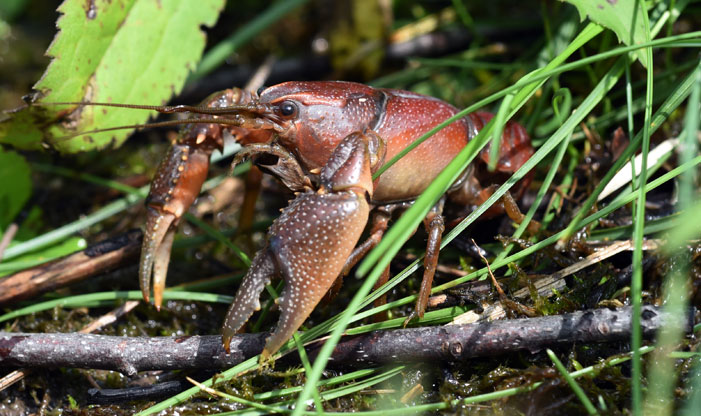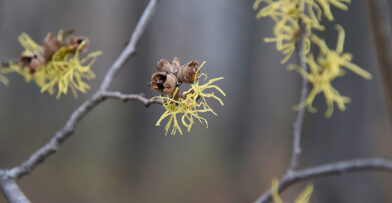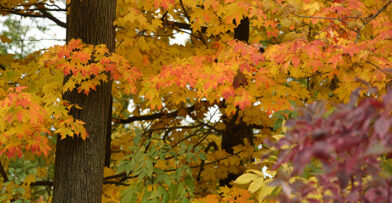Recent storms have allowed Schlitz Audubon staff to see a species not often observed on our land, the Prairie Crayfish (Procambarus gracilus).
Prairie Crayfish in Wisconsin
Prairie Crayfish are native to the Milwaukee area. According to the Wisconsin DNR, Prairie Crayfish is the rarest crayfish in Wisconsin. It is listed as a Species of Concern, known to be living in Southeastern Wisconsin. Seeing this species can also be rare, as it is generally nocturnal, emerging from its burrow at night to find food.
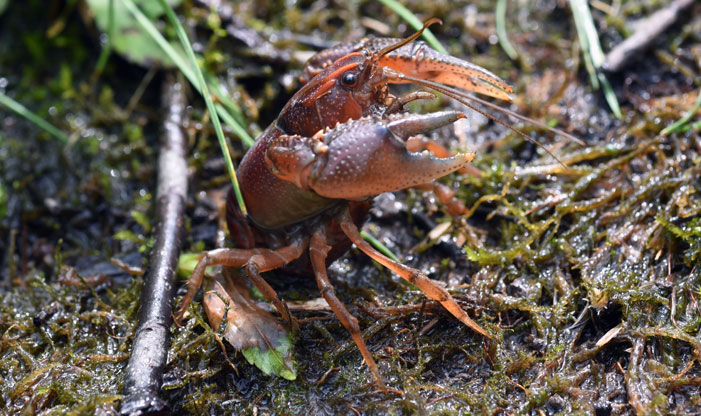
As indicated by the name the species can be found in prairies, but often prairies with wetland characteristics. These crayfish create burrows, which are holes about an inch in diameter. Crayfish place the excavated soil around the hole, known as a chimney. Even though you may not see Prairie Crayfish themselves, the chimneys around their burrow are a telltale sign of their existence. These burrows go down until the crayfish finds water, as it can live out of the water for short periods, but needs to keep its gills moist to breathe.
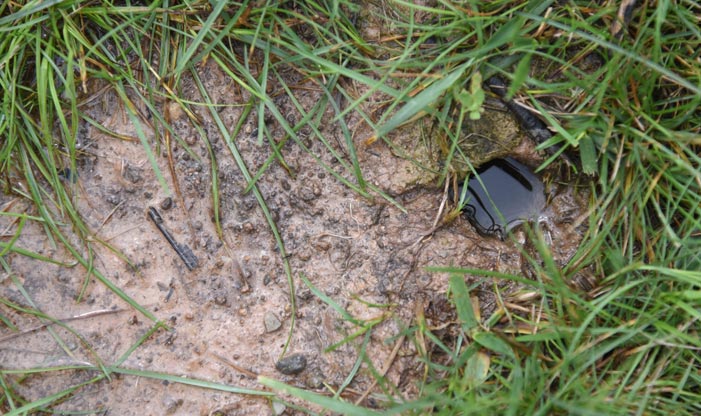
Prairie Crayfish burrow in the West Meadows. The chimney outside of the hole, which is commonly elevated from the ground, has eroded due to recent storms.
Recent rains have provided a wetter environment, which makes the Prairie Crayfish more likely to emerge during the day due to its need for oxygen. Without plants photosynthesizing (as would happen in a lake), or wind or ripples to stir up oxygen, water inside of a Prairie Crayfish burrow is low in oxygen. Although Prairie Crayfish need to maintain moisture to breathe, they need open air to acquire sufficient oxygen to live. As a result, they’re essentially forced to momentarily leave their burrows due to high water levels.
Prairie Crayfish can be a challenge to distinguish from the Devil Crayfish (Cambarus Diogenes), which is also a native burrowing species. The Prairie Crayfish can be identified by the light edges of the Rostrum (the top of its head), and postorbital ridges atop the head which form a shape like an arrowhead.
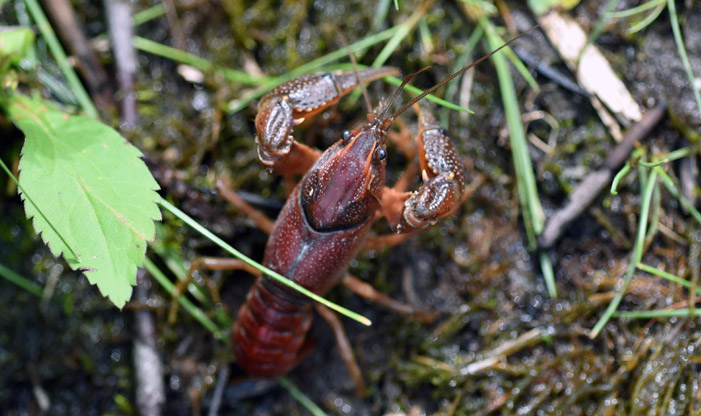
Prairie Crayfish Behavior
During the breeding season, males travel across wetlands and ponds to meet females, and the male’s shell turns a brighter shade of red. Females carry the eggs or recently hatched young, releasing them in ponds throughout the spring and summer months.
Prairie Crayfish are unique builders. As mentioned, they burrow long holes deep into the soil. During periods of low precipitation, they are known to cap their burrows with soil to keep moisture inside the chamber. When not inside burrows, they are commonly looking for food or on the way to a pond to seek a mate.
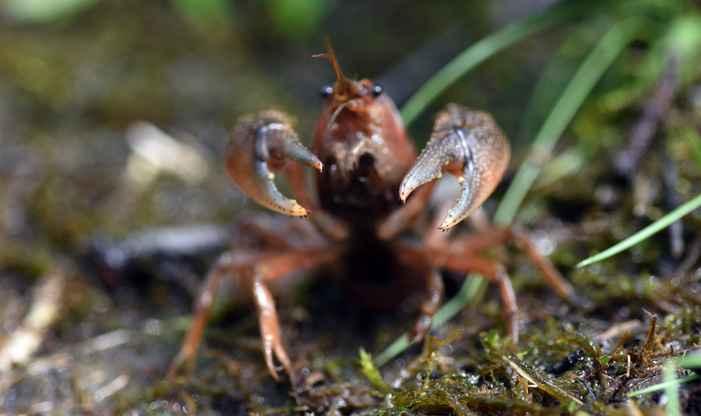
The Prairie Crayfish will display its pincers if feeling threatened.
Crayfish are often scavengers, eating dead or decaying plants, insects, or small animals. They are preyed upon by birds (including raptors), fish, aquatic mammals such as otters, and of course humans. Crayfish are one of the remarkable animals that can regenerate lost limbs.
Seeing Prairie Crayfish at the Center
The Crayfish that were spotted at the Center were seen in the West Meadows. If you head out there in search of these creatures, look for chimneys built in the middle of the trail; this is an indication that they may be near. The crayfish may be found on the edges of the trail, seeking shelter beneath prairie plants. As always, please stay on the trail while looking for this unique species, and of course, take care to not step on them or their burrows.
With their burrows flooded, they are essentially homeless for a short amount of time. If you are fortunate enough to see one, please enjoy observing it but do not pick it up. They are stressed and vulnerable without the use of their burrows. Once the stormwater subsides, they will safely return to their burrows.
Our seasons offer a wide range of opportunities to view wildlife and natural phenomena. Visit soon and enjoy this momentary glimpse of the secretive Prairie Crayfish!
